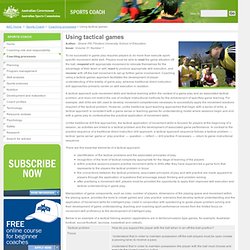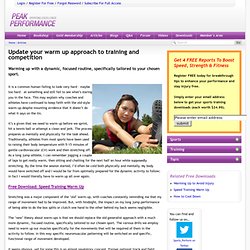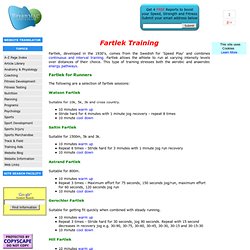

Five Safety Precautions for Lifting Weights. Lifting weights offers numerous benefits for your general health in terms of stronger bones, bigger muscles and more.

Unfortunately, all it takes is one injury to sideline you for weeks if not months. Before working out at home or hitting your local gym, run through a mental checklist of safety precautions to ensure you're practicing weight-lifting strategies that pose minimal risk of injury. Put on the right gym gear, starting with closed-toe shoes that protect your feet in case you drop any of your weights.
Exercise gloves are optional, but they protect your hands from callouses and enhance your grip on the weights for additional safety. Warm up your entire body with a brisk walk or slow jog for 10 to 15 minutes. Start lifting with a low weight load, avoiding the temptation to try and outdo the person working out next to you. Teaching games for understanding. Author: Shane Pill, Flinders University School of Education and President, SA Branch, Australian Council for Health, Physical Education and Recreation Issue:Volume 29 Number 2 Sports have traditionally been taught using the skill and drill or progressive part method.

Sports are broken down into their component skills and these are then taught. This technical approach, developed after World War 2, taught the skills isolated from the game and then the skills and the game are put back together. This method assumes there is only one right way to perform a skill, but we know from observation of elite sportspeople that frequently they don’t kick the ball or swing the racquet like the ideal model. Successful sport athletes often do not have perfect stylized technique, frequently having individual technique differences and successful unorthodoxies. This traditional technical approach begins with the question, “How is this skill performed?” Coaching - Game Sense - Part 3. Coaching - Game Sense - Part 2. Coaching - Game Sense - Part 1. Teaching games for understanding. Using tactical games. Author: Shane Pill, Flinders University School of Education Issue:Volume 31 Number 1 To be successful in game play requires players to do more than execute sport-specific movement skills well.

Players must be able to read the game situation off the ball, respond with appropriate movement to relocate themselves for the advantage of their team or self, react to produce appropriate skill execution, and recover with off-the-ball movement to set up further game involvement. Coaching using a tactical games approach facilitates the development of player understanding of this totality of game play, whereas traditional direct instruction drill approaches primarily centre on skill execution in isolation.
A tactical approach puts movement skills and tactical learning within the context of a game play and an associated tactical problem, and does not restrict the use of multiple instructional methods for the achievement of specified game learning. References. Warm Up Exercises. It is a common human failing to look very hard – maybe too hard – at something and still fail to see what’s staring you in the face.

Nditioning - Static vs. Dynamic Flexibility. Taylor Tollison explains the benefits of static and dynamic stretching and which should be used in your training programme The two main goals of a sports performance program are to prevent injury and increase performance.

As athletes we will perform anything from plyometrics to sprinting to increase our performance. One question that has been debated for some time is whether the type of stretching we chose to perform at the start of our training session will have an affect on our performance and injury levels. Plyometric Training for Power, Speed and Increased Vertical. Les Mills Research - core training for maximum results. Max Wettstein: Resistance Band Training. Running & Training Techniques : How to Run Faster With Fartlek, Tempo & Hill Running. Does CrossFit Cause Injuries? Shutterstock As CrossFit continues to explode—there are now more than 7,000 CrossFit gyms worldwide—another industry is booming, too.

Over the past two years, chiropractors have seen a significant leap in the number of patients with CrossFit-related overuse injuries, Examiner.com reports. In a new Ohio State University study, published in the Journal of Strength and Conditioning Research, 16 percent of CrossFit participants dropped out due to "overuse or injury"—an amount the researchers consider notable. The CrossFit Backlash Begins. A CrossFitter performs a "thruster," a front squat followed by an explosive upright overhead press.

Photo: Tim Banfield The increase in CrossFit Games participants since 2011 IN JULY, nearly 300,000 people tuned in live on ESPN2 to watch 26-year-old Rich Froning and 31-year-old Samantha Briggs win the Reebok CrossFit Games, the last two standing after out-muscling 138,000 global participants in three rounds of competition. For their efforts, which included CrossFit mainstays like burpees and deadlifts, Froning and Briggs walked away with $275,000 each and the title Fittest on Earth—at least according to CrossFit. Buoyed by the games, CrossFit's high-intensity workouts have exploded in popularity. Blame the nature of the training.
"If you have a preexisting condition—an old ACL tear, tendon damage, or a slipped disk—this kind of exercise will bring it to the surface," says Hayden. This isn't the first time CrossFit has been in the injury spotlight. Perhaps that's the root cause. Fartlek Training. Fartlek Training - Speed Play.
Fartlek, developed in the 1930's, comes from the Swedish for 'Speed Play' and combines continuous and interval training.

Fartlek allows the athlete to run at varying intensity levels over distances of their choice. This type of training stresses both the aerobic and anaerobic energy pathways.